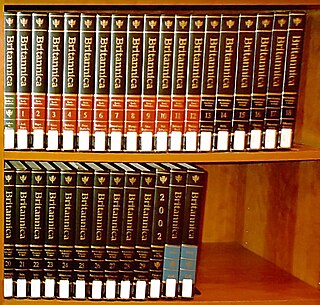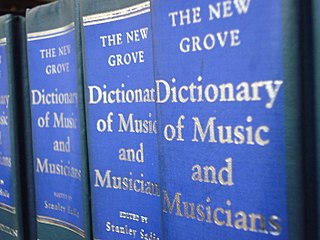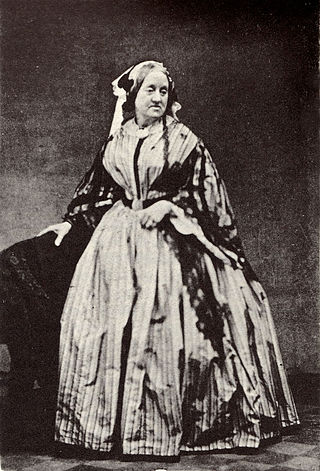
The Dewey Decimal Classification (DDC), colloquially known as the Dewey Decimal System, is a proprietary library classification system which allows new books to be added to a library in their appropriate location based on subject. It was first published in the United States by Melvil Dewey in 1876. Originally described in a 44-page pamphlet, it has been expanded to multiple volumes and revised through 23 major editions, the latest printed in 2011. It is also available in an abridged version suitable for smaller libraries. OCLC, a non-profit cooperative that serves libraries, currently maintains the system and licenses online access to WebDewey, a continuously updated version for catalogers.

An encyclopedia or encyclopædia is a reference work or compendium providing summaries of knowledge, either general or special, to a particular field or discipline. Encyclopedias are divided into articles or entries that are arranged alphabetically by article name or by thematic categories, or else are hyperlinked and searchable. Encyclopedia entries are longer and more detailed than those in most dictionaries. Generally speaking, encyclopedia articles focus on factual information concerning the subject named in the article's title; this is unlike dictionary entries, which focus on linguistic information about words, such as their etymology, meaning, pronunciation, use, and grammatical forms.
Funk & Wagnalls was an American publisher known for its reference works, including A Standard Dictionary of the English Language, and the Funk & Wagnalls Standard Encyclopedia.

The New Grove Dictionary of Music and Musicians is an encyclopedic dictionary of music and musicians. Along with the German-language Die Musik in Geschichte und Gegenwart, it is one of the largest reference works on the history and theory of music. Earlier editions were published under the titles A Dictionary of Music and Musicians, and Grove's Dictionary of Music and Musicians; the work has gone through several editions since the 19th century and is widely used. In recent years it has been made available as an electronic resource called Grove Music Online, which is now an important part of Oxford Music Online.

The Catholic Encyclopedia: An International Work of Reference on the Constitution, Doctrine, Discipline, and History of the Catholic Church. also referred to as the Old Catholic Encyclopedia and the Original Catholic Encyclopedia, is an English-language encyclopedia published in the United States designed to serve the Catholic Church. The first volume appeared in March 1907 and the last three volumes appeared in 1912, followed by a master index volume in 1914 and later supplementary volumes. It was designed "to give its readers full and authoritative information on the entire cycle of Catholic interests, action and doctrine".

Eknath Easwaran was an Indian-born spiritual teacher, author and translator and interpreter of Indian religious texts such as the Bhagavad Gita and the Upanishads.

Cyclopædia: or, An Universal Dictionary of Arts and Sciences is an encyclopedia prepared by Ephraim Chambers and first published in 1728; six more editions appeared between 1728 and 1751 with a Supplement in 1753. The Cyclopædia was one of the first general encyclopedias to be produced in English.

Routledge is a British multinational publisher. It was founded in 1836 by George Routledge, and specialises in providing academic books, journals and online resources in the fields of the humanities, behavioural science, education, law, and social science. The company publishes approximately 1,800 journals and 5,000 new books each year and their backlist encompasses over 140,000 titles. Routledge is claimed to be the largest global academic publisher within humanities and social sciences.
The Journal of Discourses is a 26-volume collection of public sermons by early leaders of the Church of Jesus Christ of Latter-day Saints. The first editions of the Journal were published in England by George D. Watt, the stenographer of Brigham Young. Publication began in 1854, with the approval and endorsement of the church's First Presidency, and ended in 1886. The Journal is one of the richest sources of early Latter-day Saint theology and thinking. It includes 1,438 sermons given by 55 church leaders, including most numerously Brigham Young, John Taylor, Orson Pratt, Heber C. Kimball, and George Q. Cannon.

John Timbs was an English author and antiquary. Some of his work was published under the pseudonym of Horace Welby.

Anna Atkins was an English botanist and photographer. She is often considered the first person to publish a book illustrated with photographic images. Some sources say that she was the first woman to create a photograph.
Thraxas is a series of twelve fantasy novels written by British author Martin Millar under the pen name Martin Scott. The first eight were originally published in the United Kingdom by Orbit Books between April 1999 and May 2005. The remaining four titles were self-published by Millar, between March 2013 and April 2022. The series has been generally positively received, and has produced one World Fantasy Award winner.
The Oxford History of the United States (1982–present) is an ongoing multi-volume narrative history of the United States published by Oxford University Press.

Catwings is a series of four American children's picture books written by Ursula K. Le Guin, illustrated by S. D. Schindler, and originally published by Scholastic from 1988 to 1999. It follows the adventures of kittens who were born with wings. Catwings is also the title of the first book in the series. The series is in print from Scholastic as of August 2015.

The Saalfield Publishing Company published children's books and other products from 1900 to 1977. It was once one of the largest publishers of children's materials in the world.
How and Why Wonder Books were a series of illustrated American books published in the 1960s and 1970s that was designed to teach science and history to children and young teenagers. The series began in 1960, and was edited under the supervision of Dr. Paul E. Blackwood of the Office of Education at the U.S. Department of Health, Education and Welfare. The series was published by Wonder Books, Inc., a division of Grosset & Dunlap.
The Popular Encyclopedia or Conversations Lexicon was a British encyclopedia that was published from 1837 to 1893 by Blackie and Son, of Glasgow. It was originally a reprint of Francis Lieber's Encyclopedia Americana, itself based on the Brockhaus Enzyklopädie.
Sarvavijnanakosam, known in English as the Malayalam Encyclopaedia, is a general encyclopedia in the Malayalam language. It is intended to be "a compendium of world knowledge", covering over 32,000 topics. The first volume was published in 1972, and in 2015 sixteenth volume was published. In total 20 volumes are expected to be published. It is published by the State Institute of Encyclopaedic Publications. The encyclopedia received a national award for best reference book in 1979, and volume 12 received the Dravidian Linguists' Association award for best educational book of 2003.

Encyclopedias have progressed from the beginning of history in written form, through medieval and modern times in print, and most recently, displayed on computer and distributed via computer networks.












